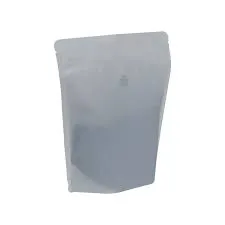- Afrikaans
- Albanian
- Amharic
- Arabic
- Armenian
- Azerbaijani
- Basque
- Belarusian
- Bengali
- Bosnian
- Bulgarian
- Catalan
- Cebuano
- chinese_simplified
- chinese_traditional
- Corsican
- Croatian
- Czech
- Danish
- Dutch
- English
- Esperanto
- Estonian
- Finnish
- French
- Frisian
- Galician
- Georgian
- German
- Greek
- Gujarati
- haitian_creole
- hausa
- hawaiian
- Hebrew
- Hindi
- Miao
- Hungarian
- Icelandic
- igbo
- Indonesian
- irish
- Italian
- Japanese
- Javanese
- Kannada
- kazakh
- Khmer
- Rwandese
- Korean
- Kurdish
- Kyrgyz
- Lao
- Latin
- Latvian
- Lithuanian
- Luxembourgish
- Macedonian
- Malgashi
- Malay
- Malayalam
- Maltese
- Maori
- Marathi
- Mongolian
- Myanmar
- Nepali
- Norwegian
- Norwegian
- Occitan
- Pashto
- Persian
- Polish
- Portuguese
- Punjabi
- Romanian
- Russian
- Samoan
- scottish-gaelic
- Serbian
- Sesotho
- Shona
- Sindhi
- Sinhala
- Slovak
- Slovenian
- Somali
- Spanish
- Sundanese
- Swahili
- Swedish
- Tagalog
- Tajik
- Tamil
- Tatar
- Telugu
- Thai
- Turkish
- Turkmen
- Ukrainian
- Urdu
- Uighur
- Uzbek
- Vietnamese
- Welsh
- Bantu
- Yiddish
- Yoruba
- Zulu
garment hang tag
The Importance of Garment Hang Tags in Fashion
In the ever-evolving world of fashion, where trends come and go in the blink of an eye, one element plays a crucial role in bridging the gap between the consumer and the brand garment hang tags. Often seen as mere marketing tools, these small pieces of paper or fabric attached to clothing items carry a wealth of information that can significantly influence a consumer's purchasing decision.
Hang tags serve several essential functions in the fashion industry. Firstly, they provide vital information about the product. This information often includes the brand name, fabric content, care instructions, sizing details, and country of origin. In an era where consumers are increasingly concerned about sustainable practices and ethical production, including information about sourcing and manufacturing processes on hang tags can enhance transparency and trust in the brand. Many consumers prefer to support companies that demonstrate environmental responsibility, and hang tags are a perfect canvas to communicate such values.
Moreover, garment hang tags play a pivotal role in branding. The design of a hang tag can reflect a brand's identity and aesthetic, helping to create a lasting impression. High-quality materials, unique shapes, and creative designs can elevate a hang tag from a simple tag to a powerful branding tool. For luxury brands, the feel of the hang tag can communicate a sense of exclusivity and quality. Conversely, for budget-friendly brands, an eye-catching design can capture the attention of price-conscious consumers. Therefore, investing in a thoughtfully designed hang tag can enhance a brand's overall appeal and recognition in the crowded fashion marketplace.
In addition to conveying brand identity, hang tags also serve a crucial marketing purpose. They can feature promotions, discounts, or upcoming collections, enticing consumers to make a purchase. Brands frequently use hang tags to engage customers, offering them a glimpse of what to expect in the future or inviting them to join a loyalty program. This integration of marketing strategies directly onto a hang tag can inspire a sense of urgency and create a connection between the consumer and the brand.
garment hang tag

Furthermore, hang tags can be educational. They can inform consumers not just about the product, but about broader issues such as sustainable fashion, ethical sourcing, or even style tips. For example, a brand focused on sustainability might include details about the eco-friendly materials used in a garment or the social programs it supports. This not only enriches the shopping experience but also empowers consumers to make informed choices aligned with their values.
Another significant aspect of hang tags is their role in the retail experience. They are often the first direct touchpoint between a product and a consumer in a store. When customers are browsing through racks of clothing, the visual appeal and informational content of a hang tag can sway their decision. A well-designed tag can draw attention and lead to an immediate purchase. It can also act as a reminder for customers who may be comparing multiple products, serving as a quick reference for essential details.
However, as technology advances, garment hang tags are evolving. With the rise of QR codes and NFC (Near Field Communication) technology, brands can transform traditional hang tags into interactive experiences. Customers can scan a code to access additional content such as styling videos, customer reviews, or more in-depth information about the brand's sustainability practices. This blend of physical and digital marketing can enhance consumer engagement and provide a richer understanding of the product.
In conclusion, garment hang tags may appear to be a small detail within the vast landscape of fashion, yet their significance cannot be understated. They are a vital communication tool that conveys essential information, enhances branding, engages consumers, and enriches the overall retail experience. As the industry continues to innovate, hang tags will undoubtedly evolve, but their core purpose—to connect consumers with brands and products—will remain paramount. For both brands and consumers, these humble tags hold immense potential, shaping perceptions and driving decisions within the dynamic world of fashion.













